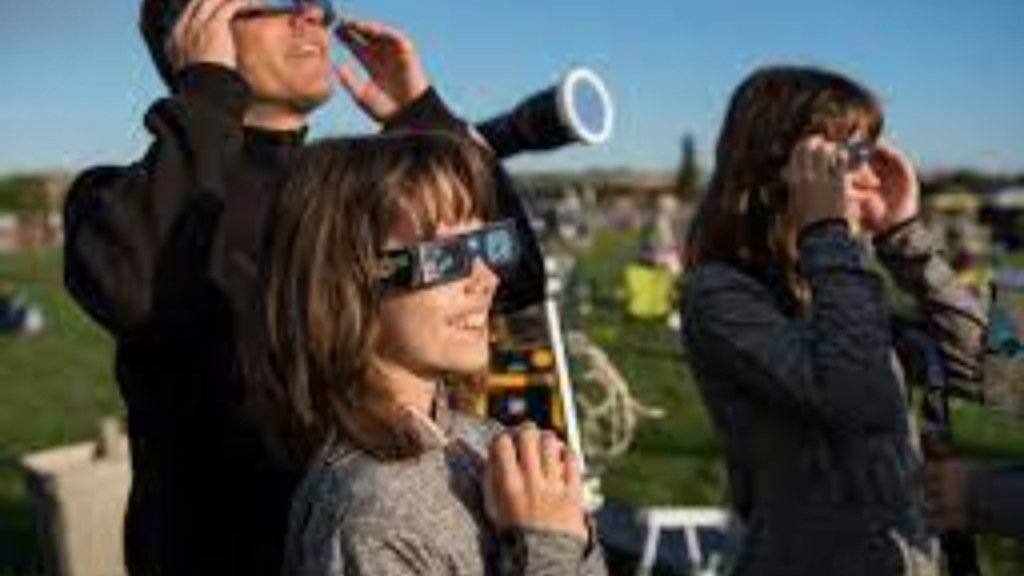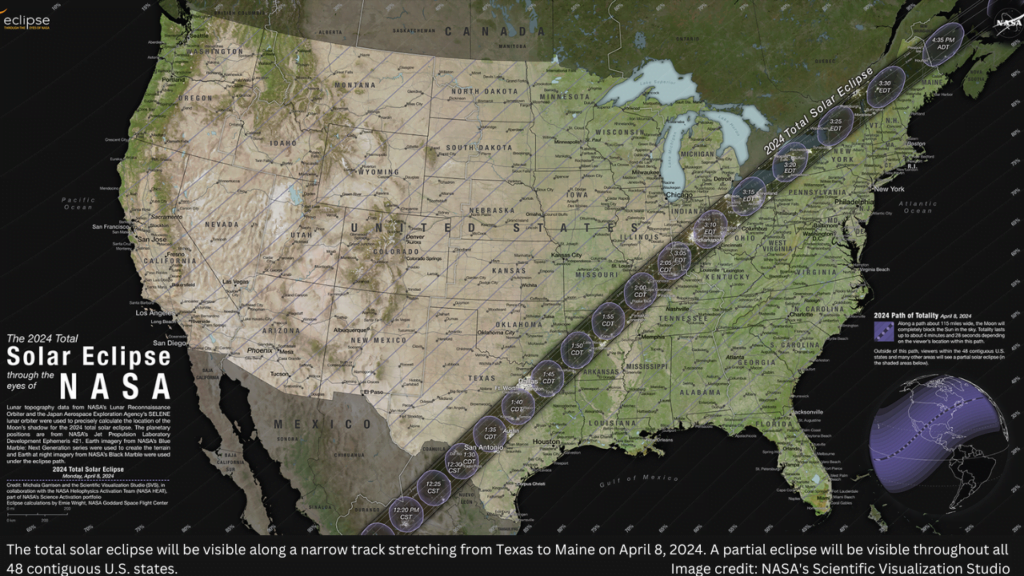
The eclipse will pass over Mexico, the continental United States, and a small section of eastern Canada. If weather permits, the skywatchers in 13 states in the United States will be able to witness the moon nearly entirely cover the sun, spreading its shadow over the flaming orb and creating the appearance of a ring in the sky.
All stargazers must be thrilled to learn that they will soon have the incredible opportunity to see this celestial phenomenon, therefore they should make plans to capture this moment.
The eclipse will pass across 13 states, from Texas to Maine, and scientists believe the southern part of the path offers the best possibilities for decent viewing. Texas is the best place to get a full view. Texas is a great destination for travelers due to its generally sunny weather and tourist-friendly big towns, and off-the-beaten-path location.
NASA will livestream the entire event so that anyone may watch from home.
Finding clear weather inside the 115-mile-wide line of totality is what travelers should do. “You have to be in that zone; standing anywhere else is useless,” eclipse chaser David Makepeace, a.k.a. the Eclipse Guy, stated. “That’s what makes it special.”
However, not everybody will wish to visit Texas. When choosing a viewing location, there are additional considerations to take into account, such as traffic, which some experts say might equal or exceed that of the solar eclipse in 2017.
Eclipse chaser Michael Zeiler, who maintains the Great American Eclipse website, said that it will be the most watched astronomical event in American history. Although 31 million people are inside the line of totality, millions more will likely gather in the little area of land that will experience an instant darkness on April 8 in the afternoon.
As the big day comes closer, travel agents around the nation are quite busy planning events like weddings, buddymoons, and other eclipse-related activities in eclipse’s major cities and path’s tiny villages.

Texas Set to Be a Prime Solar Eclipse View
When it comes to observing eclipses, the weather is still the biggest unknown. Because there are fewer odds of clouds during this eclipse, people often believe that being further south is preferable. Therefore, Texas makes sense as a location for many people who want to see eclipses.
The National Eclipse website states that Texas will see the longest eclipse of any state in the United States.
However, on the actual eclipse day, anything might happen in terms of the weather, it can be clear in Maine and foggy in Texas.
Solar Eclipse: 13 Cities Where You Can Witness the Phenomenon
- Dallas, Texas – 1:40 -1:44 PM CDT
- Idabel, Oklahoma – 1:45-1:49 PM CDT
- Little Rock, Arkansas- 1:51-1:54 PM CDT
- Poplar Bluff, Missouri- 1:56-2:00 PM CDT
- Paducah, Kentucky- 2:00-2:02 PM CDT
- Carbondale, Illinois- 1:59-2:03 pm CDT
- Evansville, Indiana- 2:02-2:05 pm CDT
- Cleveland, Ohio- 3:13-3:17 pm EDT
- Erie, Pennsylvania- 3:16-3:20 pm EDT
- Buffalo, New York: 3:18-3:22 pm EDT
- Burlington, Vermont- 3:26-3:29 pm EDT
- Lancaster, New Hampshire- 3:27-3:30 pm EDT
- Caribou, Maine- 3:32-3:34 pm EDT
Understanding Solar Eclipses: What Are They?
A solar eclipse happens when the Moon passes between Earth and the Sun, blocking the Sun’s view from a small portion of the Earth, either totally or partially.
Depending upon the Sun’s view it’s termed as total or annular or hybrid eclipse.
A total solar eclipse occurs when the Moon passes at its closest distance to the Earth for a short time and appears to be large enough to completely cover the Sun’s rays, allowing an intense solar corona visible.
In contrast, an annular eclipse occurs when the Moon passes at its farthest distance to the Earth for a short time and appears to be small enough to partially cover the Sun. Hence the Sun appears to be a bright ring from the Earth.
A hybrid eclipse transitions between a total and annular eclipse. It appears like a total eclipse at certain spots on the Earth, yet as an annular eclipse elsewhere. Hybrid eclipses are quite unusual.







Pingback: Lunar Eclipse Marvel: Two Stunning Total Events Await in 2024
Pingback: Northern Lights Colors: Nature's Light Show